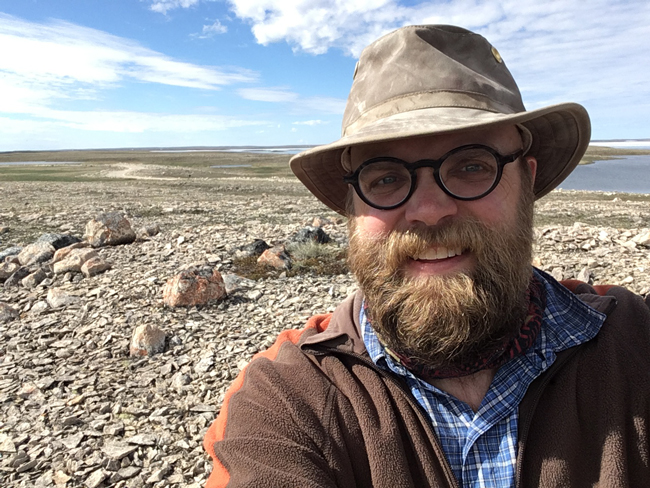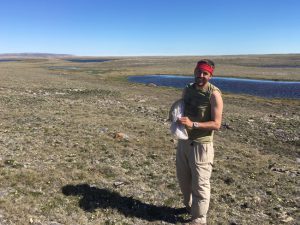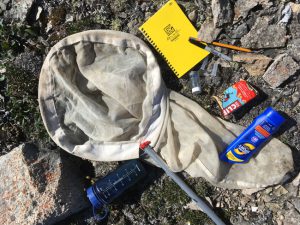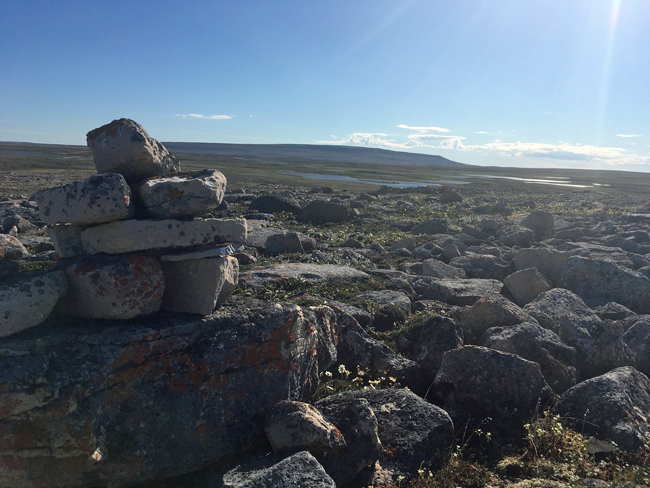
By Chris Buddle
The word “pollinator” often evokes images of honey bees and apple trees. But here in the Arctic, pollination is really about tiny flies speeding across the low-growing tundra, seeking Arctic flowers which seldom grow taller than 10 cm. In fact, of the thousand or so insect specimens we have collected off of flowers in the past few days, we have found less than a dozen bumble bees. In the Arctic, small flies do all the heavy lifting when it comes to pollination.

I’m here in Cambridge Bay (Nunavut) helping out my new graduate student, Vinko Culjak Mathieu, with his first northern field season. Our field sites are about 10 km from the townsite of Cambridge Bay, which is the largest community on the western Arctic islands. It’s a town of nearly 2000 people, and is changing quickly in part because it is the home of the almost-complete Canadian High Arctic Research Station (CHARS); this facility will make Cambridge Bay an even more important hub for Arctic research. I’ve worked up here several times before (mostly for research on ecological monitoring) but this current trip is taking my lab in a new direction since this is our first venture into studying Arctic plant-pollinator communities.
Our field days consist of an early breakfast in our lodging (which is a brand new triplex, affiliated with CHARS), packing up, and either biking or taking ATVs out to our sites. We have been spending seven person-hours at each of our sites, with butterfly nets in hand, catching all the insects that we see pollinating Arctic flowers. We record the plant species and collect the insects (they will be identified in the lab during the winter months).

Vinko will analyze the data to better understand what insect species pollinate what flowers, and whether this changes as the season progresses. Vinko’s goal is to paint a comprehensive picture of the plant-pollinator network in the Arctic – this is important since pollination is a key ecosystem service, and it is critical to understand how insect and plant communities might shift because of climate change.
We have observed many interesting things so far, including the incredible dominance of small-bodied flies as pollinators, including mosquitoes (they are key pollinators up here). Some plants, however, do have their pollen quite well hidden, and only larger flies or an occasional bumble bee can muscle their way in. After our first site is done, we move on to the next site, but not before stopping for a field lunch (sandwiches, apples, and chocolate of course). We watch a few snow buntings fly about, see some Tundra swans off in the distance, and hear the far-away sounds of Sandhill cranes.

Thankfully the weather has been spectacular so far this summer, reaching just about 20 Celsius by mid-day (that is very warm for this far North). There has also been a strong breeze, which helps ward off the ever-hungry mosquitoes. We could do field work 24 hours a day, as the sun doesn’t dip below the horizon this time of year. However, despite the serious fun when collecting insects on the tundra, we do get tired and try to get back to our triplex by 6 pm or so. After dinner we debrief, clean-up, chat, or read, and then do our best to get some sleep (which itself is a challenge as your body senses the constant light, making it tough to shut down).
Unfortunately I’ll be leaving Vinko and his field assistant in another day or so – I have to get home and back to emails, meetings, trees, and nights that are dark! However, I am comforted knowing that the field team in Nunavut will have some terrific weeks ahead – full of more flies, some bees and butterflies, and spectacular northern landscapes.
Chris Buddle has been working at McGill since 2002, in the Department of Natural Resource Sciences at McGill’s Macdonald Campus. His research program is focused on the biodiversity and community ecology of insects and spiders, with an emphasis on Arctic systems. Long involved with academic programs and administration, he was appointed as the Dean of Students on August 1, 2016.

